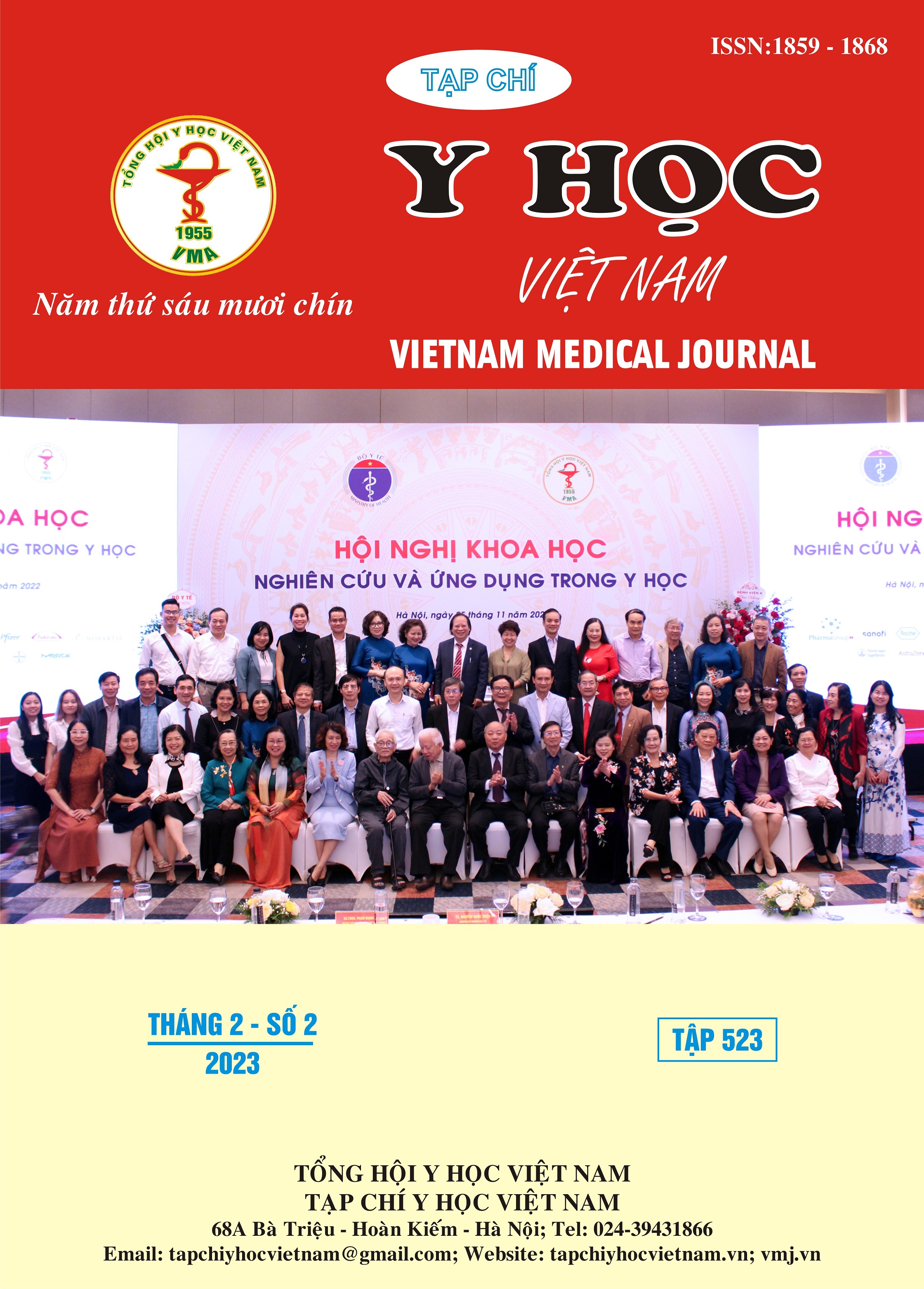RESULTS OF LAPAROCOPIC SURGERY IN TREATMENT OF LOW RECTAL CANCER AT VIET DUC HOSPITAL IN PERIOD 2018-2020
Main Article Content
Abstract
Objectives: To evaluate the results of laparoscopic surgery of low rectal cancer. Materials and methods: A retrospective study on 49 patients who underwent laparoscopic surgery to treat low rectal cancer in the Viet Duc hospital from 01/2018 to 12/2020. Results: The rate of low rectal cancer patients who had symtoms was 87.8%, most of them are hospitalized because of defecation with blood and mucus (77.6%), stage II it was 36.7%, stage III 40,8%. The tumor invaded surrounding: T1 + T2 was 10.2%, T3 was 63.3%, T4 was 8.2%. There were 7 cases of distant metastasis (14,3%). The most commonly used laparoscopic method was Miles technique, accounted for 44.9%, the low-connected surgery had 13 cases (accounting for 26.5%), the Hartmann's surgery had 7 cases (14.3%), the ostomy surgery had 7 cases (14.3%). There were no cases of death within 30 days post-operatively. The time in hospital was 9.85 ± 3.89 (days). Only 1 case with complication in dissection of posterior vaginal wall. The rate of postoperative complications was 16.3%, including postoperative bowel obstruction, surgical site infection, urinary disorder and complications of open new anus. The survives of 12-month, 24-month, and 36-month time were 83.3%, 75.4%, and 70.4%, respectively.Conclusions: Laparoscopy surgery for low rectal cancer method was safe, well-recover after surgery and had feasible results.
Article Details
Keywords
laparoscopic, rectal cancer
References
2. Nguyễn Cường Thinh. Nghiên cứu kết quả phẫu thuật nội soi điều trị triệt căn bệnh ung thư trực tràng tại bệnh viện Trung ương Quân đội 108. Tạp chí Y dược lâm sàng 108. 2011;6:355-361.
3. Nghiên cứu khả năng bảo tồn cơ thắt hậu môn điều trị ung thư trực tràng bằng kĩ thuật mổ nội soi. Tạp chí Y học lâm sàng. 2007;23:33-35.
4. Mai Đình Điều. Nghiên cứu ứng dụng phẫu thuật nội soi trong điều trị ung thư trực tràng, Luận án Tiến sĩ y học, Đại học Y dược Huế. Published online 2014.
5. Kim N-K KYW et al. Factors associated with local recurrence after neoadjuvant chemoradiotion with total mesorectal excision for rectal cancer. World J Surg.2009;33(8): 1741-1749.
6. Van der Pas MH HE et al. Laparoscopic versus open surgery for rectal cancer (COLOR II): short- term outcomes of a randomised, phase 3 trial. The lancet oncology. 2013; 14(3):210-218.
7. Mathias L AOS. Magnetic Resonance Imaging of Rectal Cancer. MRI of Rectal Cancer. Springer; 2010:25-47.Phan Hải Thanh PNH. Kinh nghiệm điều trị ung thư trực tràng bằng phẫu thuật nội soi. Tạp chí Y học TP Hồ Chí Minh. Published online 2009:139-145.
8. Jaiswal et al. Laparoscopic versus Open Total Mesorectal Excision for Rectal Cancer: A Clinical Comparative Study in a Government Hospital. World J Gastroenterol. Vol 6.; 2013.
9. Karanjia ND CA et al. Leakage from stapled low anastomosis after total mesorectal excision for carcinoma of the rectum. Br J Surg. 1994; 81(8):1224-6.
10. Nguyễn Hoàng Bắc. Cắt Toàn Bộ Mạc Treo Trực Tràng Bằng Phẫu Thuật Nội Soi Trong Điều Trị Ung Thư Trực Tràng Thấp, Tạp Chí Y Học Việt Nam, Tập 319, 131-138.; 2006.Nguyễn Cường Thinh NAT. Nghiên cứu kết quả phẫu thuật nội soi điều trị triệt căn bệnh ung thư trực tràng tại bệnh viện Trung ương Quân đội 108. Tạp chí Y dược lâm sàng 108. 2011;6:355-361.


